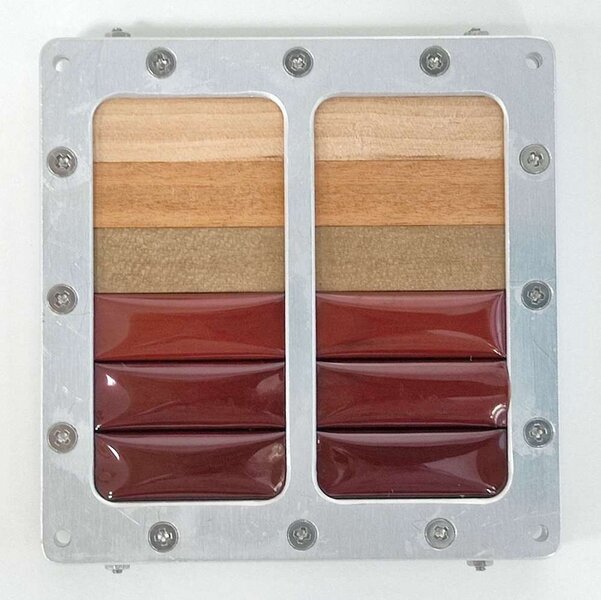Create a free profile to get unlimited access to exclusive videos, sweepstakes, and more!
Sustainable Satellites Made of Wood Could Be Answer to Space Junk
This is not a joke.

The 2016 documentary Fight for Space — streaming now on Peacock — features a panel of experts including Bill Nye, Michio Kaku, and Apollo astronaut Jim Lovell as they discuss the challenges of continued space exploration. Among them is the mounting threat of space junk clouding the space around our planet. NASA tracks tens of thousands of pieces of space junk and that’s just the stuff large enough for them to see. Now, Kyoto University researchers lead by Dr. Koji Murata are planning to construct an entire satellite out of wood, as a test bed for more sustainable spacecraft.
WE’RE REALLY GOING TO MAKE WOODEN SPACECRAFT?
Historically, we have relied on more robust materials, mostly metal, to build our satellites and spaceships. There’s an obvious logic to that decision, space is harsh, and we needed materials that could stand up to the task. The thought of building wooden vessels and launching them into space feels almost laughable, but wood’s fragility is what makes it a good material.
Our problem with space junk is precisely because we made a whole bunch of machines that won’t break down, even when we’re done with them. They’re spinning around up there, crashing into one another, fracturing into an increasingly populated cloud of high-velocity bullets. Choosing materials that will break down a little easier is starting to make a lot more sense.
RELATED: Can You Build A Satellite Made Out of… Wood?
Wood is a sustainable and renewable material, and it will burn up more easily in the atmosphere upon re-entry, without creating any harmful or dangerous biproducts. The only question is whether there is a type of wood robust enough to work in space long enough to be useful.
“Decomposition of wood in low-Earth orbit could ultimately help reduce space junk, much like the plastic problem in land, soil, and oceans water in the Earth. Even if the wood does not burn out after re-entering the atmosphere, it is possible that it will degrade over the long term and gasify due to ultraviolet rays, cosmic radiation and atomic oxygen,” Murata told SYFY WIRE.
Murata’s team started in the lab by exposing different types of wood to a wide range of conditions, simulating what they would experience in space. They put the wood in a vacuum and hit it with temperatures between -150 and 150 Celsius (-238 to 302 Fahrenheit). Their wood samples withstood the punishment with almost no deterioration. It was a good first start; the only place left to go was space.
The team sent a selection of wood samples to the International Space Station where they were placed outside, in the vacuum of space, for a period of 10 months. During that time, the samples experienced dramatic swings in temperature, exposure to cosmic rays and solar radiation, and interactions with Earth’s upper atmosphere.
“Considering that atomic oxygen occupies most of the atmosphere in low-Earth orbit and is highly reactive, we expected it to have an effect on the surface of the exposed wood — which is an organic material — causing it to gasify and disappear,” Murata said.
The samples were retrieved from space by astronaut Koichi Wakata and placed inside SpaceX CRS-26, a commercial resupply service mission, for return to Earth. Once back on the ground, researchers confirmed there was no decomposition or surface damage to the samples.
THE LIGNOSAT WOODEN SATELLITE
Now that we know wood can handle the conditions of low-Earth orbit, scientists are moving forward with an experimental wooden satellite. The craft, dubbed LignoSat, is scheduled for launch in 2024, as part of a joint mission between NASA and the Japanese Space Agency JAXA. While there were no significant differences in the performance of each type of wood, the team has settled on Magnolia as their material, citing its workability, stability, and strength.
“Because wood is transparent to electromagnetic waves, possible missions would include observation of geomagnetism and attitude control using built-in sensors; and radio wave communication using built-in antennas,” Murata said.
Humanity’s earliest vessels were made of wood, and they helped us cross oceans. It’s only right that wood should come along as we set sail on cosmic seas.
Fight for Space is streaming now, on Peacock!



























